Analysis
TEFAF 2016 Opens with Brisk Sales for Old Master Artworks
The 'mother of all fairs' opens its doors to VIPs today.
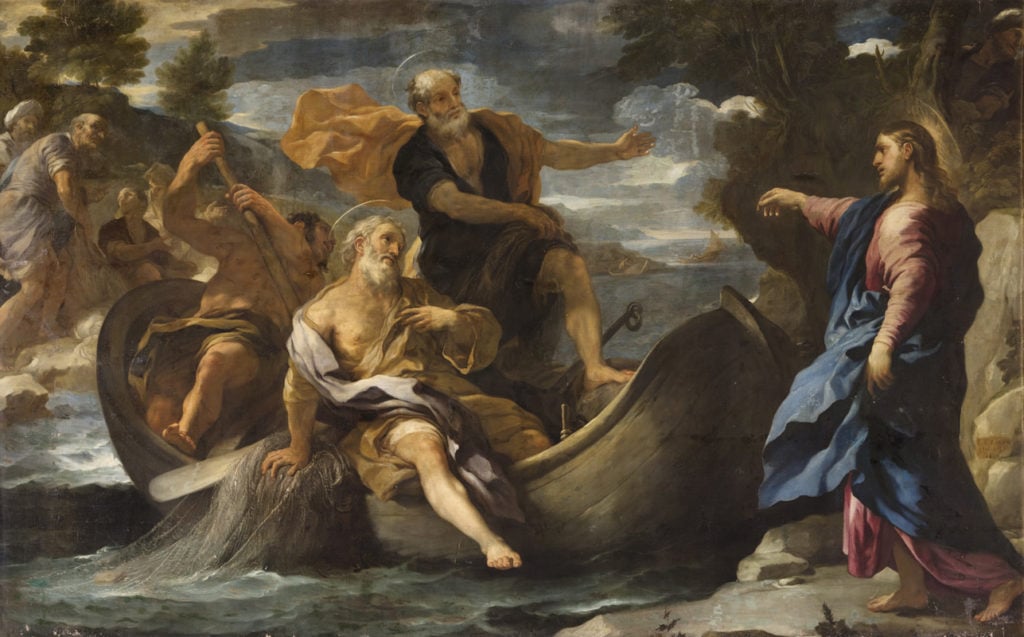
Image: Frick Art & Historical Center, Pittsburgh.
The 'mother of all fairs' opens its doors to VIPs today.

Hili Perlson

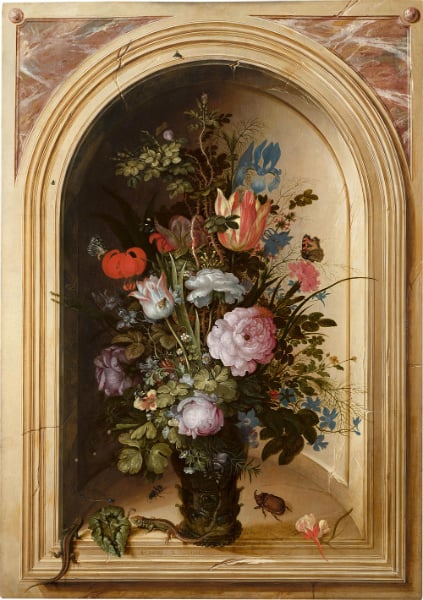
Roeland Savery Still life of flowers (1615).
Photo: Courtesy Colnaghi Gallery.
“We’ve had a spectacular start to the fair,” said Konrad Bernheimer, chairman of London’s Colnaghi Gallery. By 4 p.m. on preview day, the gallery has made three major sales totaling well over €10 million: A still life from 1615 by Roeland Savery—one of a handful of surviving flower pieces by the artist—was purchased by the Mauritshuis in the Hague for €6.5 million. In addition, the gallery sold Luca Giordano’s The Calling of Peter and Andrew (1690) to a private European collector for €2 million, and several other 17th-century works to private collectors as well.
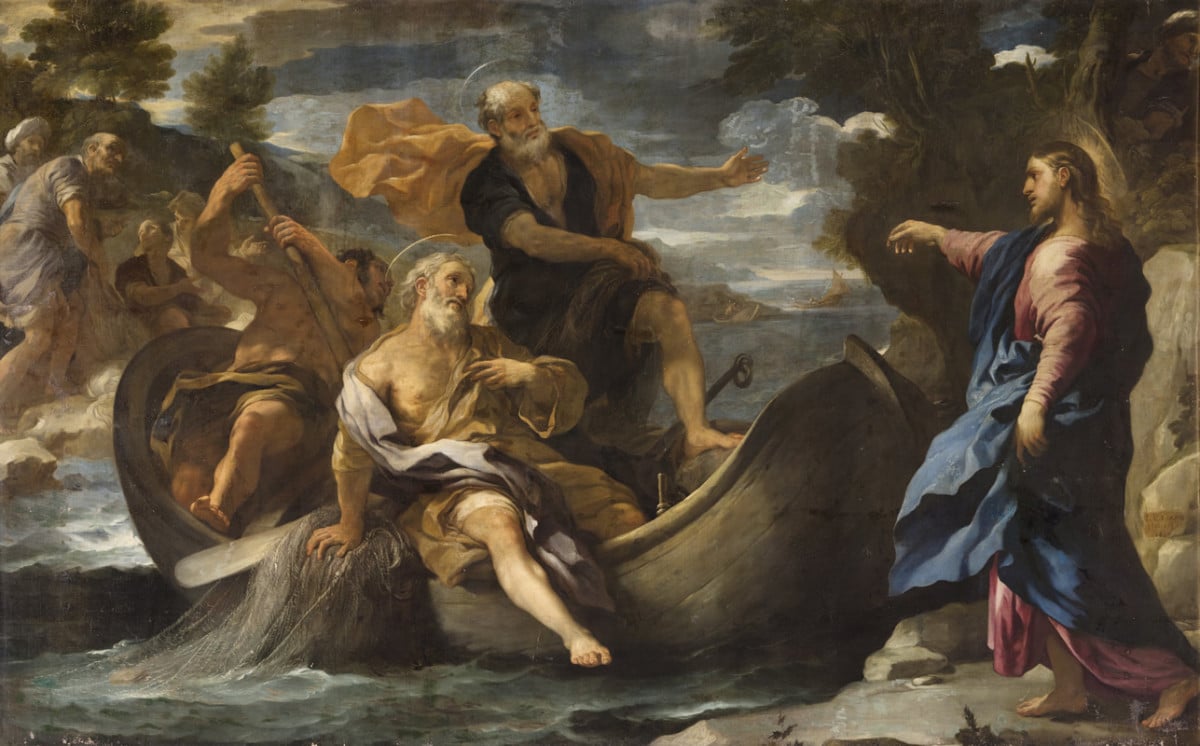
Luca Giordano (Neopolitan, 1632–1705). The Calling of Saint Peter and Saint Andrew, 17th century.
Image: Colnaghi Gallery.
“Spectacular” is a fitting way to describe TEFAF, the mother of all art fairs. This year, Dutch-born Patrick von Maris, a former Sotheby’s managing director, is taking the reins of the fair from longtime director Paul Hustinx, who decided to step down after 17 years. Von Maris made some changes to the floor plan, giving the fair a more dynamic and energetic touch.
With offerings ranging from haute jewelry, antiques, traditional African art, design, rare books, and of course the fair’s strongest suit, Old Master paintings, perusing the soft-lit, comfortably carpeted aisles is as dazzling as it is delightful. Until the hundreds of invited VIPs start pouring in, that is, and space becomes the most sought-after commodity.
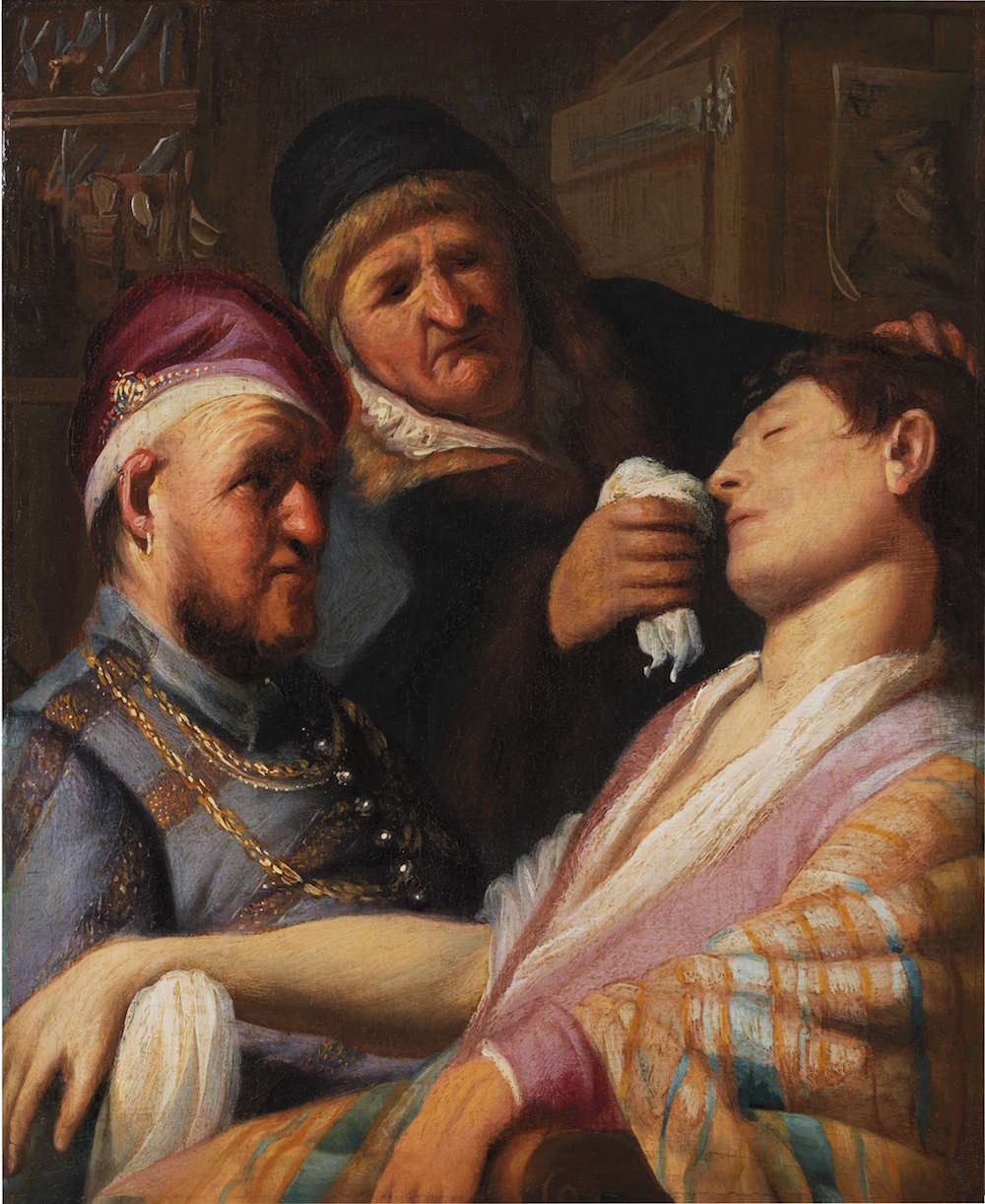
Rembrandt Smell (17th century).
Photo: Galerie Talabardon et Gautier via TEFAF Maastricht.
There was a substantial, champagne-sipping crowd lining up in front of Galerie Talabardon et Gaultier this afternoon to ogle the newly-rediscovered Rembrandt, The Unconscious Patient, presented here for the first time since its attribution to the Dutch master.
There were also a lot of Picassos at TEFAF, as is to be expected, but one presentation stole the show. Berlin’s Galerie Bastian has gathered Picasso’s entire Vollard Suite, which includes some 100 etchings produced between 1930-1937 commissioned by the artist’s first Paris gallerist, Ambroise Vollard. The suite is in a number of museums and from the sets that were created, many are broken up.
Gallerist Aeneas Bastian was beaming when he talked about gathering the entire 100-piece suite, which is priced at an undisclosed amount in the seven figures. The etchings seem to be bound by a common narrative, and while there’s no agreement on what that might be, there’s a strong emphasis on the role of the sculptor in the scenes. Some of Picasso’s own sculptures appear in the works, and in one of them I spot a piece that is remarkably similar to Bust of a Woman, the $106 million work currently at the heart of a legal dispute.
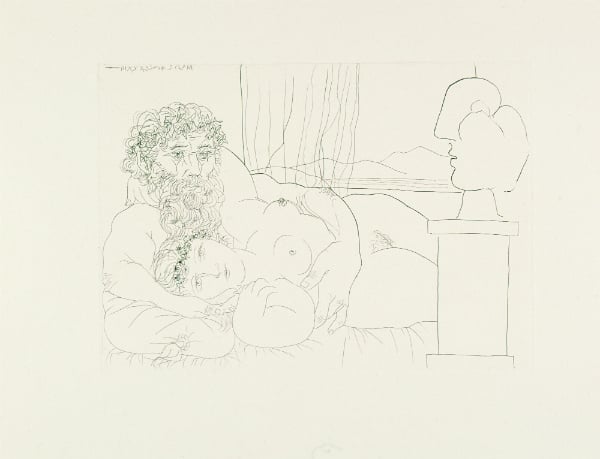
Picasso Reclining Sculptor, I, (1933).
Photo: Courtesy Galerie Bastian © Succession Picasso.
At Van de Weghe Fine Art, a 1931 Picasso from a private collection was priced at $13.5 million. It was one of the works the gallery had kept aside to premier at the fair. “Our selection for TEFAF is more classic and conservative,” the gallery’s Pierre Ravelle-Chapuis tells me. They also have a $3.8 million Basquiat from a private collection making its market debut.
Galerie Thomas from Munich, which specializes in German expressionism, has brought some impressive works by Hans Arp, Ernst Ludwig Kirchner, Max Beckmann, and Alexej von Jawlensky to the fair, with Jawlensky’s Frauenkopf (1913) priced at $3.4 million. But there are also artworks by a later generation on view, including German post-war Zero movement’s co-founder, Otto Piene. While Zero artists such as Piene, Heinz Mack, and Günther Uecker have seen a market revival in the past two years, bringing them to a fair like TEFAF with its strong collector focus on paintings seems like a bold move.
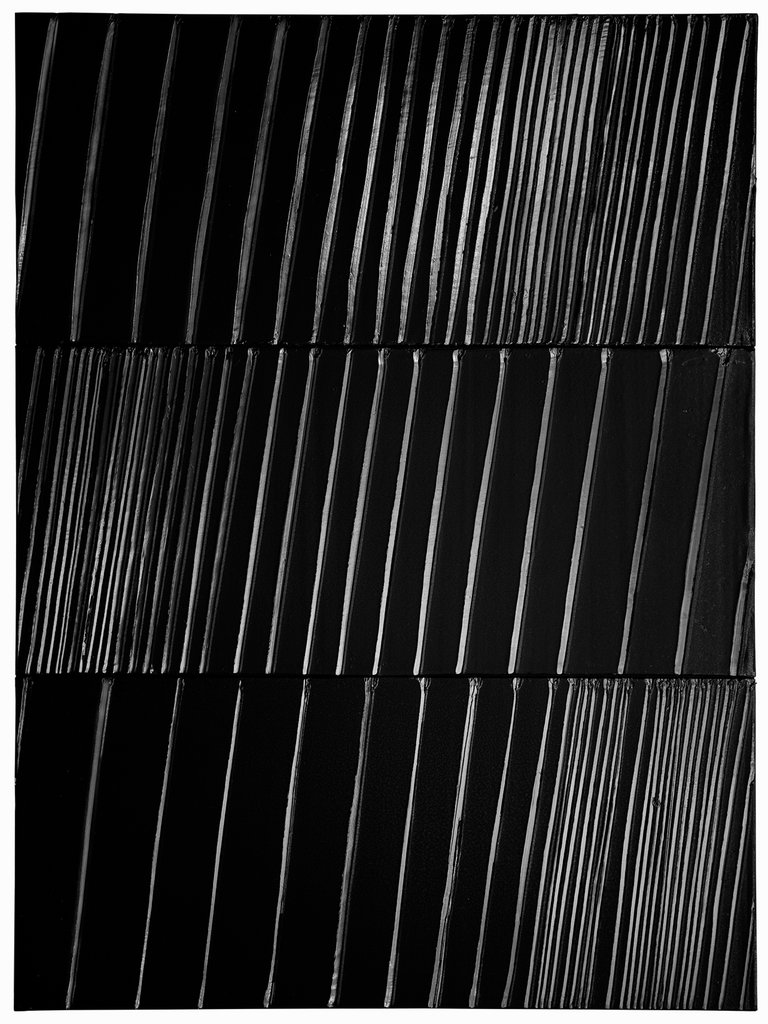
Pierre Soulages, Peinture 243 x 181 cm, 21 Mai 2011 (2011)
Photo: courtesy Galerie Karsten Greve
Over at Galerie Karsten Greve, impressive large-scale works stood out. A huge acrylic on wooden panel by Cy Twombly from 2004, Untitled (Gaeta), set in the artist’s frame, lured collectors to the booth, which also included works by Lucio Fontana, Louise Bourgeois, Wols, and striking acrylic paintings by Pierre Soulages, representing the current phase in his work that focuses on the light reflected by stark, black-painted surfaces.
Given that some paintings by Van Dyck and other Old Masters priced in the lower seven figures, TEFAF, with its slower pace and heavy hitting clientele, puts the frenzy from contemporary art fairs in a different perspective. I run into Belgian collector Alain Servais, who couldn’t disagree more. “I’m a real museum lover,” he tells me, “and I see artworks here where the year is right, the name is right, but the work would never make it to the museum,” he maintains. “This really reaffirms my confidence in contemporary art.”
Servais, who collects emerging artists, brings up the two Cranach paintings which were seized from an exhibition in France last week, showcasing the collection of the Prince of Liechtenstein, due to provenance questions. “It shows you really need to hold on to your certificates. I prefer to know the artist I’m buying from,” he concludes.
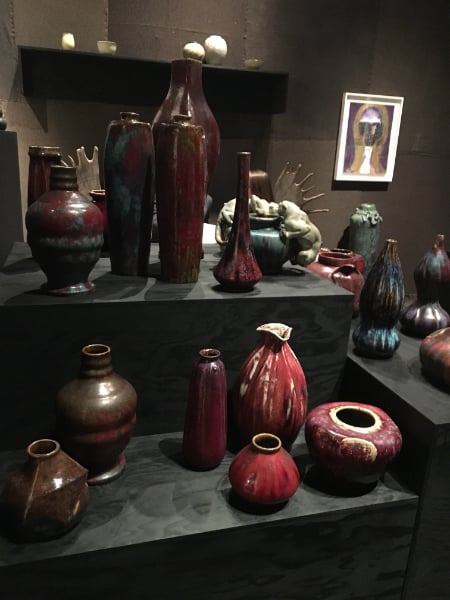
Ceramics by Pierre-Adrien Dalpayart at Jason Jacques, curated by Rick Owens, with work by Huma Bhabha in the background.
Photo: Hili Perlson.
Over at the design section, a New York’s Jason Jacques is showing a booth curated by baron of dark fashion, Rick Owens, who is an avid collector as well as a furniture designer. The center piece of the small presentation is a group of ceramic works by 19th century ceramic artist Pierre-Adrien Dalpayart, whom Owens collects. “That’s how we’ve met in the first place,” Jason Jacques tells me, in head-to-toe Owens. “Dalpayart is arguably the most sexy ceramic artists of that time, and he was the first ever to be shown at a fine-art gallery.”
Sculptural chairs by Owens are presented side-by-side with bronze sculptures by Huma Bhabha, also a favorite of the designer’s. “It’s a slow boiler,” Jacques explains, although the booth is completely full with visitors. “Contemporary anything doesn’t come easily at TEFAF. But I like to shake things up!”

Installation view of Big Sun by Jean-Michel Basquiat at Van de Weghe Fine Art.
Photo: Hili Perlson.
If contemporary art—which for the second time gets a small curated section at TEFAF—is underrepresented, then photography seems to be the real underdog at the fair.
There are hardly any photographic works on view, save for the stand of Galerie Daniel Blau, which focuses on the medium. Alongside some of the earliest pictures ever made by photographic pioneer Hippolyte Bayard, the gallery is also showing, for the first time, a selection of vintage Weegee prints, which were recently discovered in the American “Newspaper Enterprise Association” (N.E.A.) archive. They are a steal, with prices starting at € 5,000.
There are also a number of vintage color prints of atomic bomb testings from the 1950s, which the gallery bills as “rarities of 20th century documentary photography,” that have recently become available through the estate of a former member of the atomic testing committee. That’s something you certainly don’t see every day.